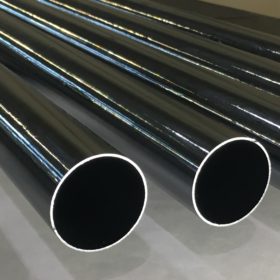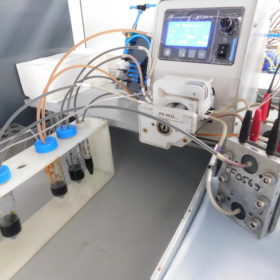Featuring the top five entries from this year’s Array Changing Technologies, Energy Storage Special, editor’s pick, Technology Highlights and the highlights of our German platform our jury will laud the winners of the awards, at the end of the year.
>>Apply now for pv magazine Awards 2019<<
Jury call outcomes
As a result of the deliberations of the inaugural pv magazine Annual Award jury, a nine-person international panel of PV-industry experts, five entries have been selected as award winners. A further seven entries were recognized as being Highly Commended.
The entrants were selected from the winners and highly-ranked entries in the pv magazine global and pv magazine Germany series of annual awards throughout 2018.
The Annual Awards winners have been selected in three categories: Market Innovation, being applied for improved performance or cost reduction by the industry today; Disruptive Innovation, technologies that could deliver step-change improvement in the coming years; and Energy Transition, addressing fundamental and emerging issues in the journey to a fully-decarbonized energy system.
The 2018 award winning technologies are:
Market Innovation
GT Advanced Technologies – Polysilicon tube filaments

Reducing energy consumption and increasing the efficiency of polysilicon production through a technology that can be simply and cost-effectively deployed in today’s production facilities.
Nextracker – TrueCapture
![]()
A software package being deployed in PV power plants that can boost power output and genuinely deploys AI to enhance performance over time and according to conditions.
First Solar – Series 6 module

Large format CdTe module, enhancing the competitiveness of a proven thin film technology, with the manufacturer to be particularly credited for progressing the technology in isolation from the mainstream c-Si sector.
Disruptive Innovation
CMBlu – Organic Flow Batteries

Large scale battery storage technology that is made from organic and recycled materials. Organic redox flow has the potential to become a clean and cheap storage technology and, due to this the potential, to disrupt today’s storage technologies – despite some existing questions such as cycle life time, energy density and proof of concept.
Energy Transition
The Mobility House – Vehicle-to-grid (V2G) technology

Connecting e-mobility with grid operation, in what could be a major trend in the provision of essential grid services. After having equipped the Amsterdam Arena with a large scale storage system for multiple business models and using second-use automotive batteries, The Mobility House has now made a big move in integrating an electric vehicle in the national grid with a bidirectional charging/discharging solution.
All selections will be recognized as a winner of the pv magazine 2018 Annual Award
The jury recognized seven entries as being Highly Commended
JinkoSolar – Cheetah Series module
Larger wafers represent a key industry trend, with the manufacturer to be credited for ‘pulling out all of the stops’ in pursuing high efficiency and power output.
1366 Technologies – Direct Wafer process
A potentially step-change technology with the potential to reduce polysilicon consumption, wafer thickness in multicrystalline PV.
centhrotherm – c.DEPO LP LPCVD system
Addressing the cell technology pathway towards passivated contacts and the potential next wave of innovation in mass production of n- and p-type solar cells.
Hanwha Q Cells – Q.Peak DUO-G5 module
High quality cell and module design, with a noteworthy attention to detail in reducing degradation from a range of sources.
E3/DC – TriLINK Technology
Technology driver in residential storage, with three-phase applications extending the reach of solar batteries.
Kaco New Energy – blueplanet 125 TL3
Deploying silicon carbide technology to achieve higher power classes, which is also an industry trend as other manufacturers are following the same route.
Open EMS Association
Representing a move towards open-source energy management to expand the reach of smart storage solutions, widely seen as prerequisite for a widespread deployment of distributed storage technologies.
The awards winners and highly commended technologies were selected as representing some of the most pressing, forward thinking, and significant technology trends in 2018 including: enabling mono-crystalline PV, deploying AI, addressing long-term energy storage challenges, and embracing silicon carbide for high power applications.
Editors’ Notes:
Trends from the 2018 Annual Award process:
There are several major trends which can be deduced from this year’s award applications. On the manufacturing level, there are still disruptive technologies in the pipeline, such as the wafer production process of 1366 Technologies. As is common among disruptive technologies, it is not clear whether at the end they will be successful or not.
On a more practical level, after the current wave of PERC, experts are now discussing what shape the next technology wave will take. Passivated contacts, which can be produced using centroterm’s tool, are emerging as a very strong candidate. The innovation on module level is more characterized by small steps which enhance competiveness, such as larger wafer and module size.
On the inverter side, there is a trend to silicon carbide MOSFETs. The technology was already developed years ago, e.g. by Fraunhofer ISE, one of the finalists of this year’s competition. It seems now that silicon carbide is increasingly being deployed in inverter mass production, as seen with the products of Kaco and ABB in the final round. Basically, it was hard to decide between the two.
Enhancing competiveness is done by small steps in module development as well as in BOS development. Single-axis tracking has seen a considerable increase in deployment, and here too there is the potential for power output gains, as seen by the award winner Nextracker. Nextracker is also active in the field of combining large scale PV with storage, as noted by the award jury.
In large scale storage applications, the potentially disruptive development of organic redox flow may be an option future deployment. There are certain hurdles the technology must clear towards commercialization, however the promise is evident.
Indeed, as the proportion of renewables in electricity networks increases, the integration of storage becomes of vital importance. This refers not only to the integration of storage with solar, but also in using the batteries of electric vehicles for grid stabilization. What may seem a simple task, on second view is quite complex. To effectively integrate distributed storage systems, operators have to bring together many players, develop a functional business model, and meet complex regulatory requirements. The Mobility House has therefore merited to be termed as important innovation.
This page was last updated on March 18, 2019.





